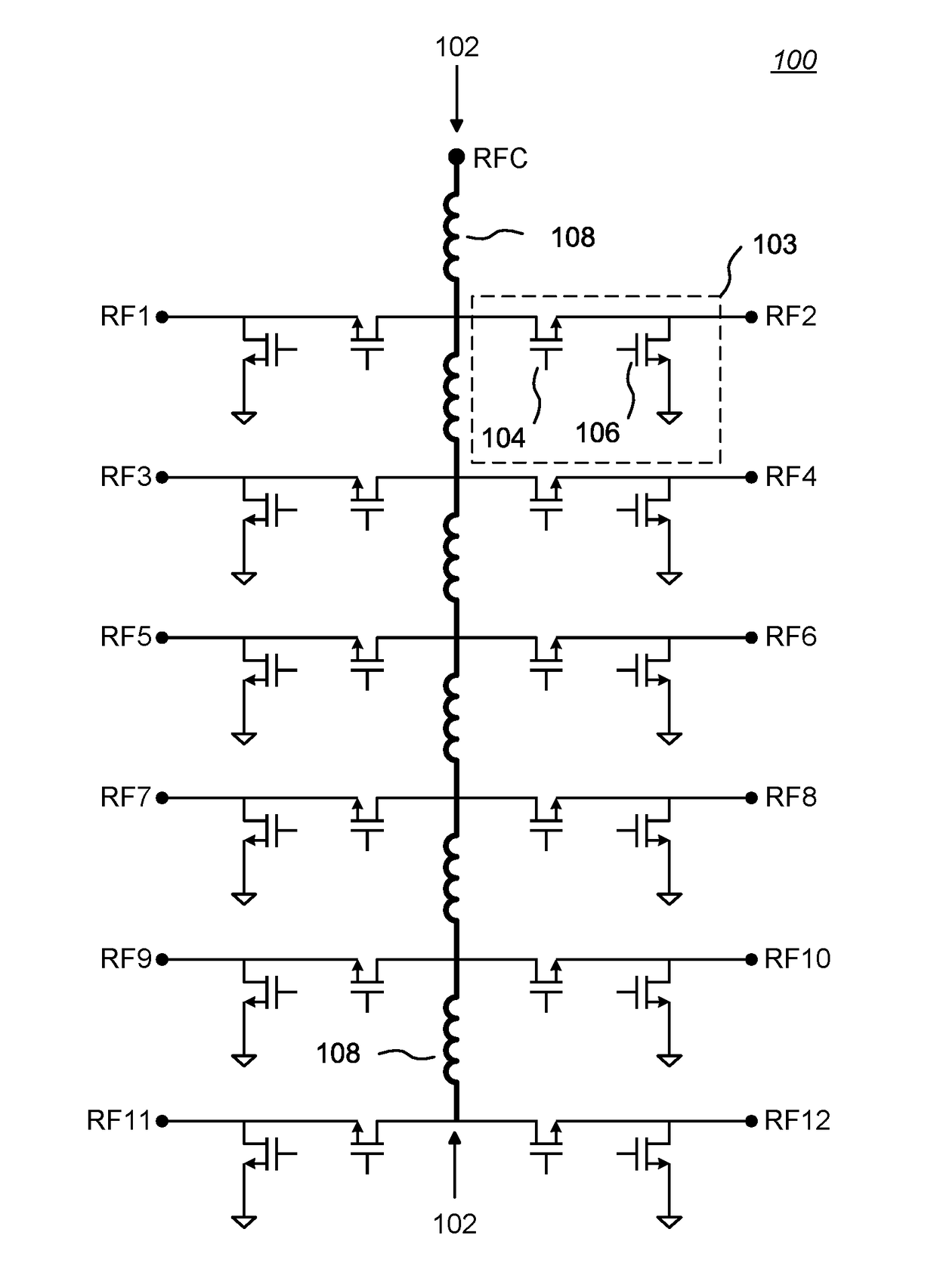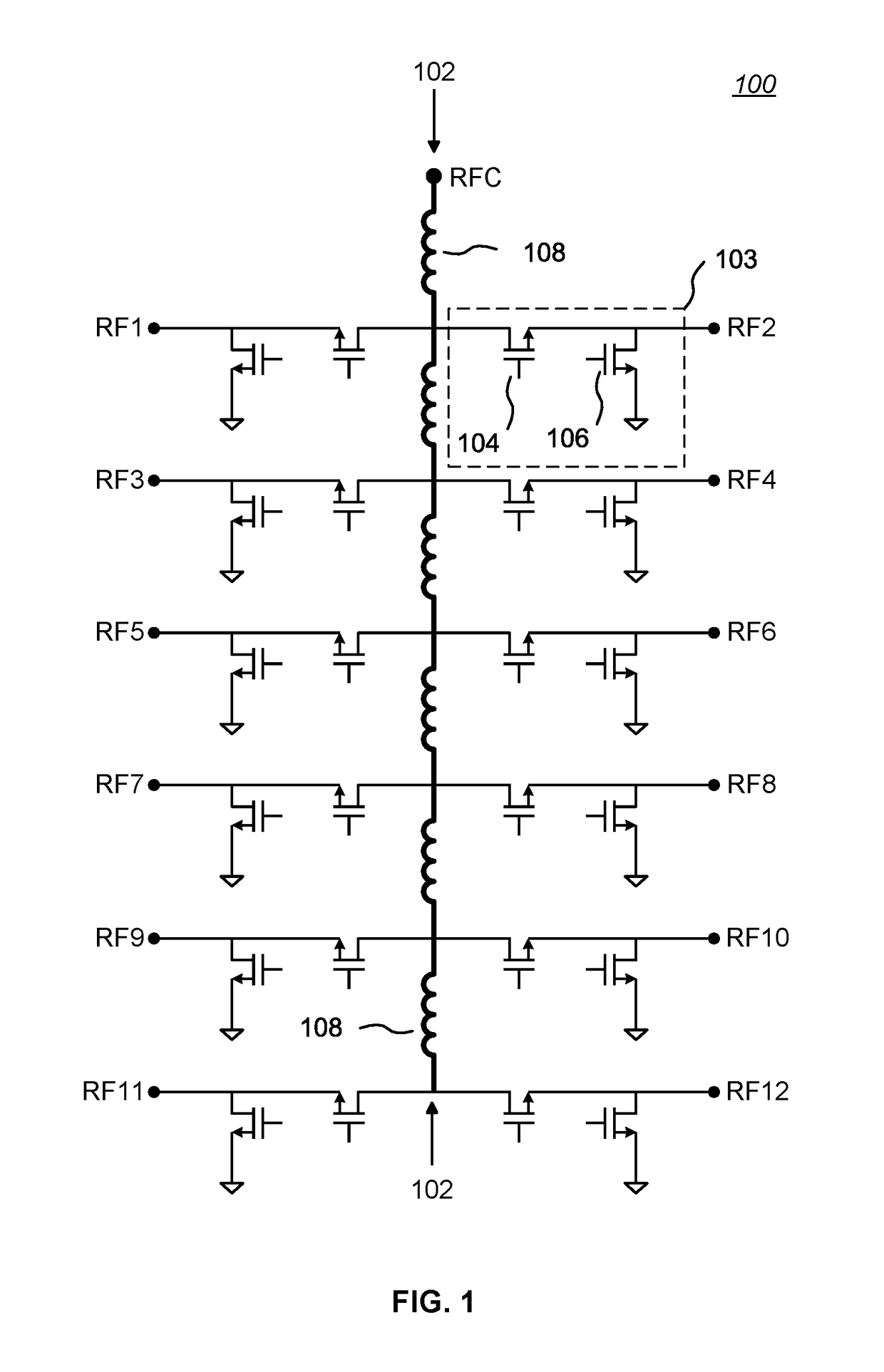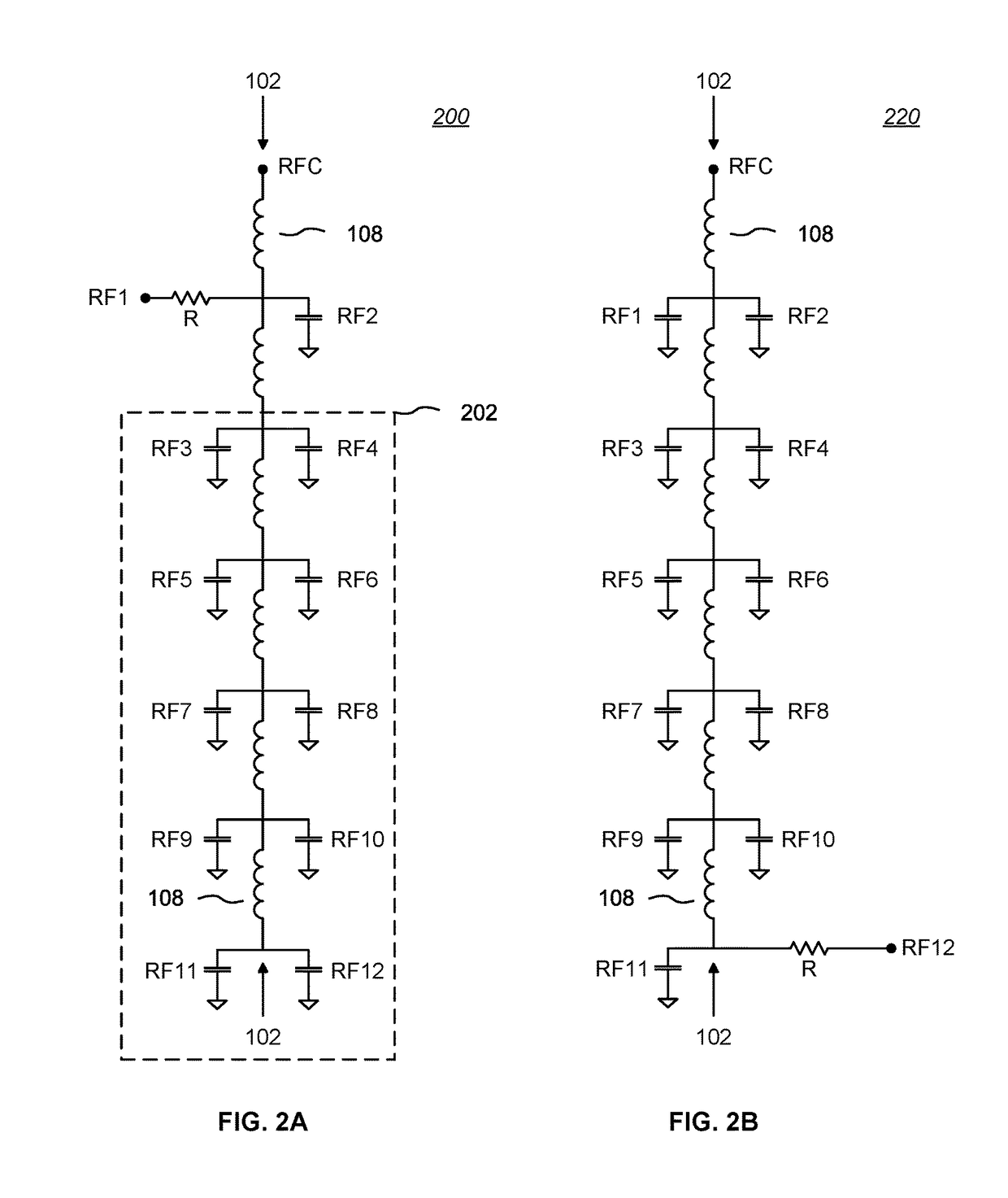High Throw-Count RF Switch
a high throw-count, switch technology, applied in electronic switching, pulse technique, semiconductor devices, etc., can solve the problems of low rf performance, complicated design of such an ic, and the number of available transmit and/or receive paths, etc., to achieve good rf performance and high throw-count
- Summary
- Abstract
- Description
- Claims
- Application Information
AI Technical Summary
Benefits of technology
Problems solved by technology
Method used
Image
Examples
first embodiment
[0033]FIG. 3 is a schematic diagram of a first embodiment of a high throw-count RF switch 300 in conformance with the present invention. In the illustrated embodiment, the general switch architecture of FIG. 1 has been modified to include one or more branch isolation (BI) switches 302. Each BI switch 302 is independently switchable, the ON-OFF state of which depends on which port RFn is to be coupled to the common port RFC. In the illustrated example, two BI switches 302 (SW1 and SW2) define three sections A, B, C of branches. The control logic for the two BI switches 302 as a function of a single active port RFn would be as set forth in TABLE 2. Note that the RF1-RF12 designations may be assigned in any order; they are merely a label name for each port.
TABLE 2SectionActive PortBI Switch StateARF1-RF4SW1 = OFFSW2 = OFFBRF5-RF8SW1 = ONSW2 = OFFCRF9-RF12SW1 = ONSW2 = ON
[0034]Accordingly, the BI switches 302 are normally OFF (blocking), and only turned ON (conducting) when associated “...
second embodiment
[0041]FIG. 4 is a schematic diagram of a second embodiment of a high throw-count RF switch 400 in conformance with the present invention. The RFn ports are divided into two or more sub-divisions (two are shown, SD1, SD2), each having a common path 102a, 102b coupled to the common port RFC by a corresponding main branch isolation (BI) switch 402; two such switches SW1, SW2 are shown in the illustrated example. Within each sub-division SDn, further BI switches 404 may define separate sections or banks of ports RFn as in FIG. 3; one such switch (SW3, SW4) per sub-division SD1, SD2 is shown.
[0042]The illustrated configuration may be useful for certain package sizes (e.g., a 4×4 pad or pin package) and / or an application requirement calling for short IC bond wires to the RFn ports. The main BI switches 402 may help to bridge such distances and reduce IL for each signal path. Note that some optimization of FET switch widths for the series FETs of each port RFn may be necessary as well to c...
third embodiment
[0046]FIG. 5 is a schematic diagram of a third embodiment of a high throw-count RF switch 500 in conformance with the present invention. For compactness, the series-shunt switching elements 103 of FIG. 3 are shown as blocks labeled “S / S”, and the various inductors 108 of FIG. 3 are shown as blocks labeled “L”.
[0047]In the illustrated example, the common port RFC is positioned between the ends of the common path 102. The signal ports RFn (16 are shown by way of example) are coupled to the common path 102 so as to form multiple sub-groups (two are shown, G1, G2) of signal ports in a “butterfly” configuration (i.e., multiple banks Gn of signal ports arrayed around a centrally positioned common port RFC; thus, the concept is scalable). The common port RFC can be coupled to any of the ports RFn by activating appropriate ones of the intervening branch isolation switches SW1-SW4, similar to the operation of the architecture shown in FIG. 3. As in FIG. 3, in the illustrated embodiment, no p...
PUM
 Login to View More
Login to View More Abstract
Description
Claims
Application Information
 Login to View More
Login to View More - R&D
- Intellectual Property
- Life Sciences
- Materials
- Tech Scout
- Unparalleled Data Quality
- Higher Quality Content
- 60% Fewer Hallucinations
Browse by: Latest US Patents, China's latest patents, Technical Efficacy Thesaurus, Application Domain, Technology Topic, Popular Technical Reports.
© 2025 PatSnap. All rights reserved.Legal|Privacy policy|Modern Slavery Act Transparency Statement|Sitemap|About US| Contact US: help@patsnap.com



